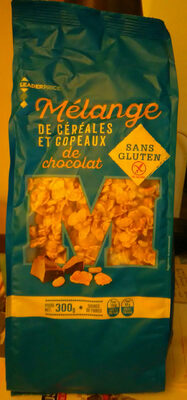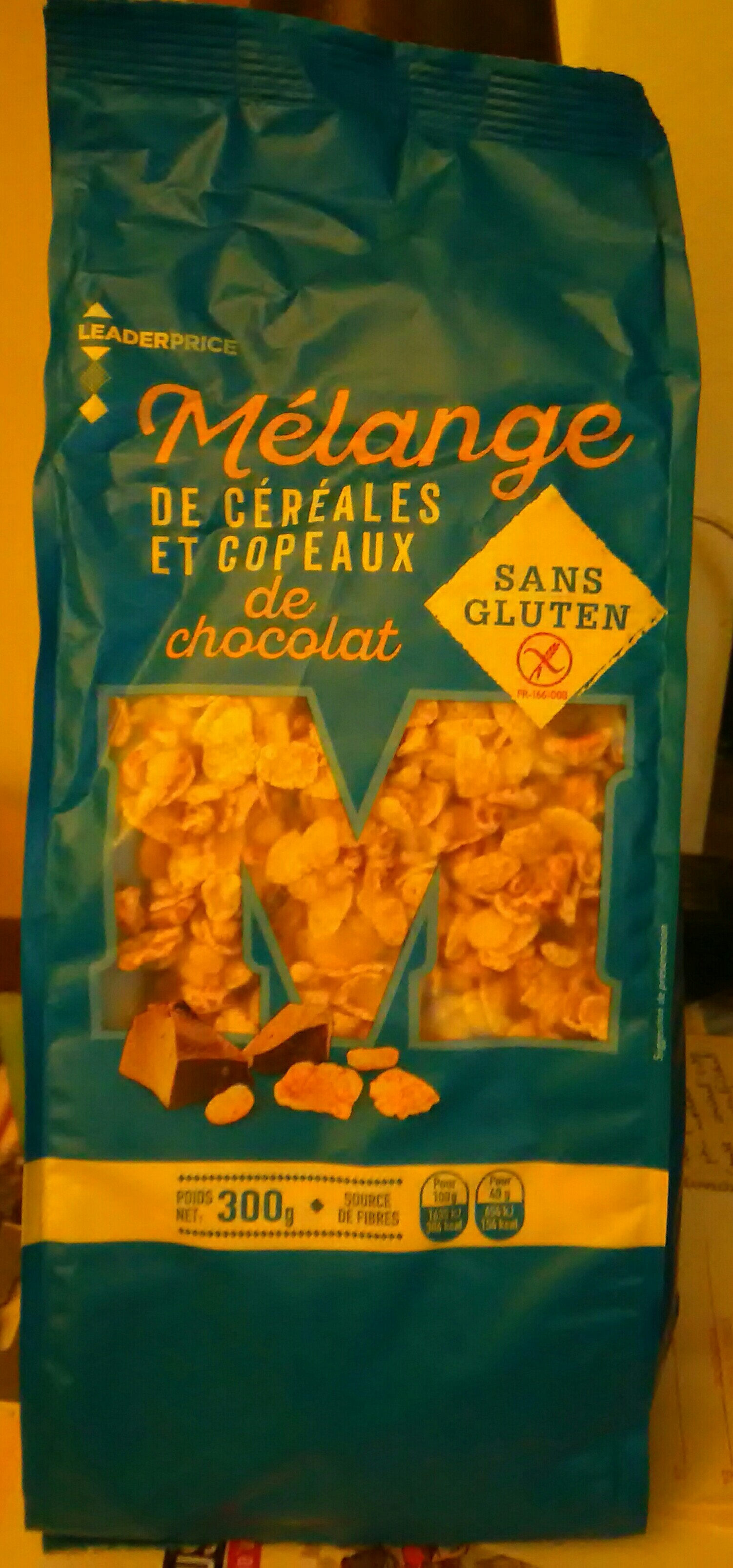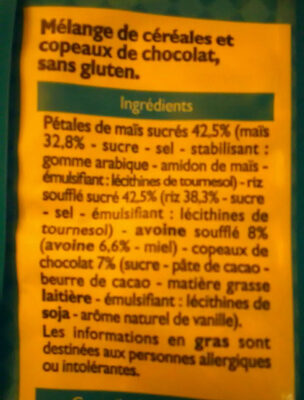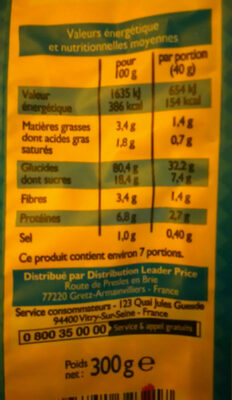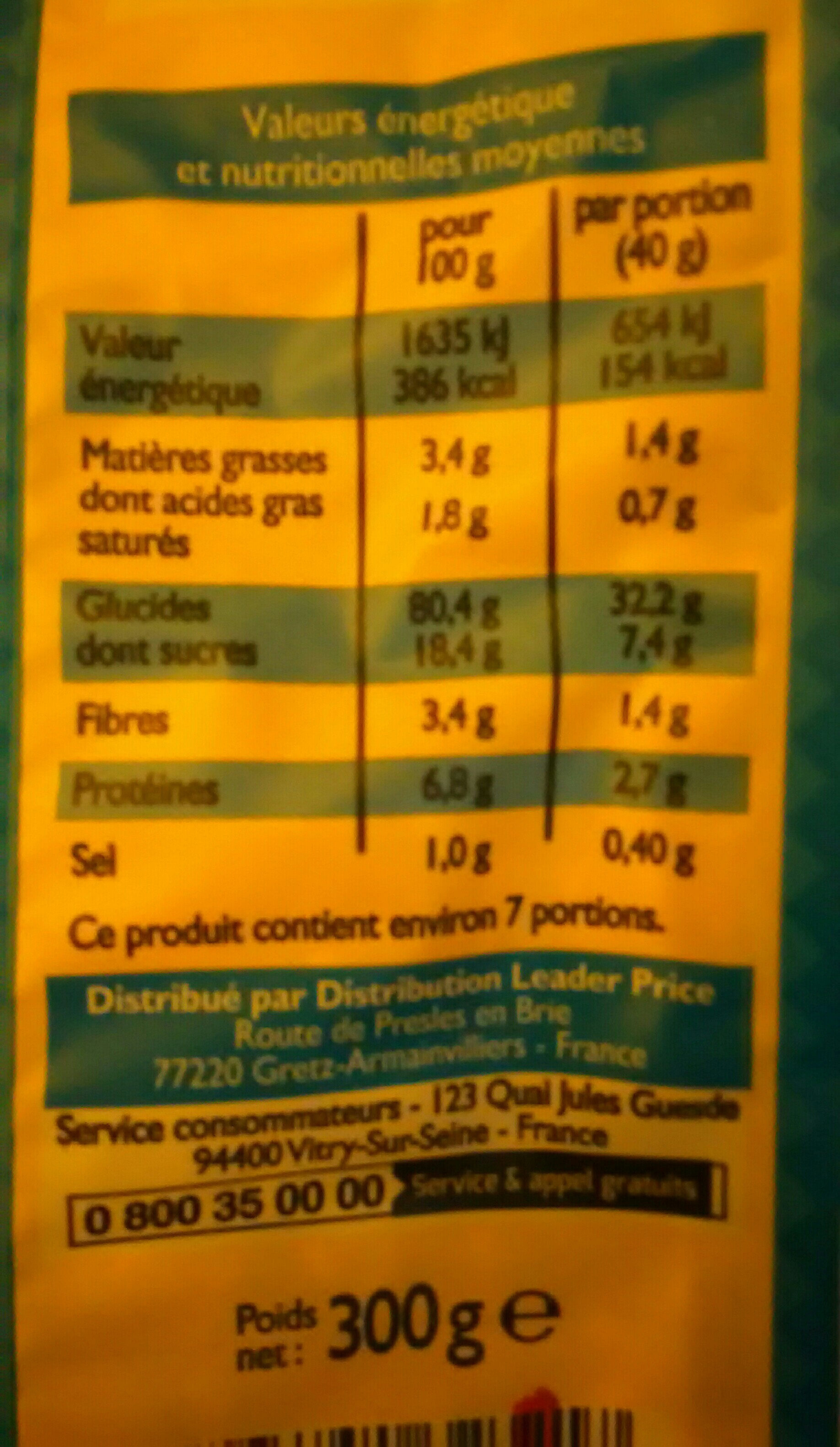Mélange de céréales et copeaux de chocolat - 300 g
Ambiguous barcode: This product has a Restricted Circulation Number barcode for products within a company. This means that different producers and stores can use the same barcode for different products.
×
This product page is not complete. You can help to complete it by editing it and adding more data from the photos we have, or by taking more photos using the app for Android or iPhone/iPad. Thank you!
×
Kaody bara: 01144987
Quantity: 300 g
Packaging: fr:Sachet plastique 300g
Marika: Mélange de céréales et copeaux de chocolat
Sokajy: fr:Pétales maïs petit déjeuner
Labels, certifications, awards: en:No gluten
Manufacturing or processing places: Suisse
Stores: Leader price
Firenana ivarotana: Madagasikara
Matching with your preferences
Environment
Packaging
Transportation
Report a problem
Loharanom-kevitra
Product added on avy amin'ny abby
Last edit of product page on avy amin'ny packbot.
Vokatra eto amin'ny pejy kirakirain'i openfoodfacts-contributors, roboto-app.
If the data is incomplete or incorrect, you can complete or correct it by editing this page.
